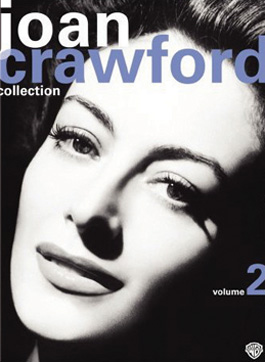home | metro silicon valley index | movies | current reviews | dvd review

The Joan Crawford Collection, Vol. 2
Five discs; Warner Home Video; $49.98
By Michael S. Gant
This marvelous box set offers five prime examples of Joan Crawford's star magnetism over a 20-year stretch, from MGM gloss to Warner Bros. grit. In 1934's Sadie McKee, Crawford plays a servant girl who zooms to the top ("from calico and cotton to ermine and orchids"). Along the way, she tangles with three men: a ukulele-strumming dreamer (Gene Raymond), a dipso millionaire (Edward Arnold) and a stiff-necked lawyer (Franchot Tone). The film's morality weaves as unsteadily as Arnold's character: is Sadie a gold digger or does she really have a heart of gold? Crawford and Gable team up in Strange Cargo (1940) on an odyssey through the jungle as Gable and fellow inmates crash out of a penal colony and take bar girl Julie with them. Gable and Crawford give off plenty of sparks, and Crawford, sans makeup, displays the severe planes of her face in some remarkable close-ups. But this bizarre allegory is really about a Jesus stand-in named Cambreau (Ian Hunter) who shows up out of nowhere and starts offering Christian solace to anyone who will change their ways. Director Frank Borzage always had a taste for transcendence through love, but Cable and Crawford's earthy sexuality is at odds with the rest of the film. The film also includes a surprisingly overt gay subplot between an older prisoner and his young "pal." Crawford plays a scarred woman in 1940's A Woman's Face, directed by George Cukor. Plastic surgeon extraordinaire Melvyn Douglas fixes her right up, while reptilian Conrad Veidt plots murder. Flamingo Road (1949) shows Crawford at Warners, where she could have parts that were going to younger actresses at MGM. She plays a carnival girl in a Southern town who falls for Zachary Scott's weak-willed would-be pol, Fielding Carlisle (the name should have tipped her off). Sydney Greenstreet, as a corrupt gothic sheriff grandiosely named Titus Semple, dominates the action—he looks a little like Dick Cheney. The camp factor in 1953's Torch Song (the only color film in the set) is off the charts. Crawford plays a very hardened Broadway song-and-dance star who terrorizes her associates (i.e., just like the real Crawford). Only Michael Wilding's blind pianist can "see" her better nature. The capper comes when Crawford performs a blues vamp in one of the last blackface numbers seen in a respectable Hollywood movie. Backstage, she rips off her wig, and we are treated to the unforgettable (for all the wrong reasons) close-up of Crawford in dark tan makeup and flame-orange lipstick. The film historians called upon to comment in the Turner Classic Movies short accompanying the film are at a loss to explain this troubling transgressive moment. The set comes a couple of Crawford docs and lots of cartoons and vintage shorts.
Send a letter to the editor about this story.
|
|
|
|
|
|